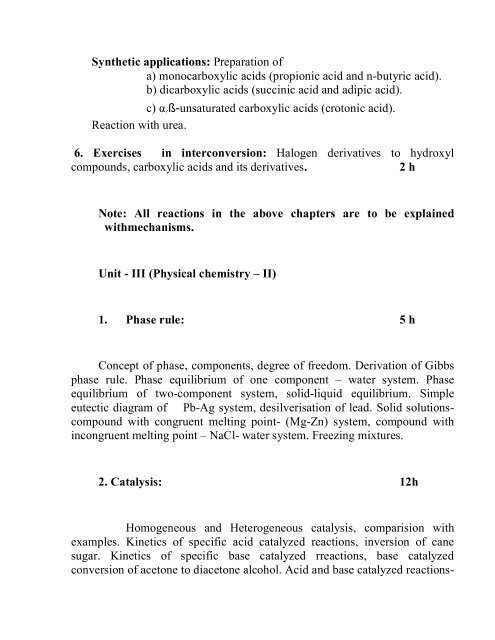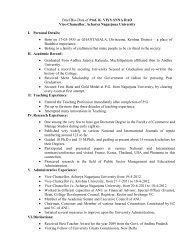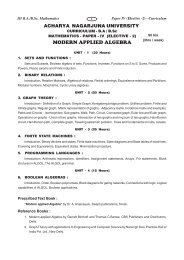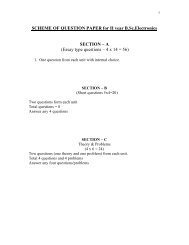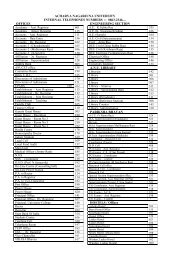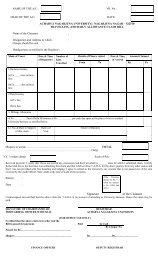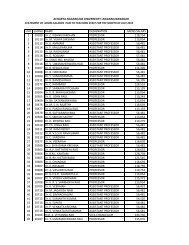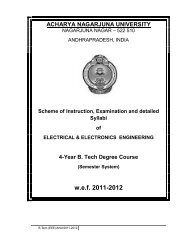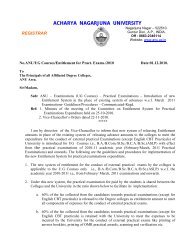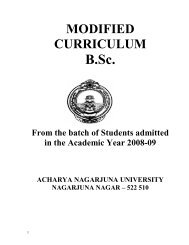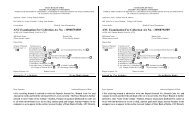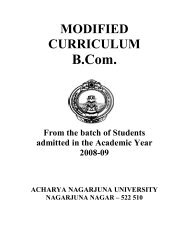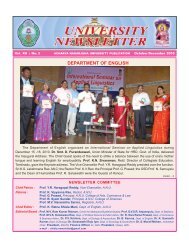B.Sc. - Acharya Nagarjuna University
B.Sc. - Acharya Nagarjuna University
B.Sc. - Acharya Nagarjuna University
Create successful ePaper yourself
Turn your PDF publications into a flip-book with our unique Google optimized e-Paper software.
Synthetic applications: Preparation of<br />
a) monocarboxylic acids (propionic acid and nbutyric acid).<br />
b) dicarboxylic acids (succinic acid and adipic acid).<br />
c) α,ß-unsaturated carboxylic acids (crotonic acid).<br />
Reaction with urea.<br />
6. Exercises in interconversion: Halogen derivatives to hydroxyl<br />
compounds, carboxylic acids and its derivatives.<br />
2 h<br />
Note: All reactions in the above chapters are to be explained<br />
withmechanisms.<br />
Unit III (Physical chemistry – II)<br />
1. Phase rule: 5 h<br />
Concept of phase, components, degree of freedom. Derivation of Gibbs<br />
phase rule. Phase equilibrium of one component – water system. Phase<br />
equilibrium of twocomponent system, solidliquid equilibrium. Simple<br />
eutectic diagram of PbAg system, desilverisation of lead. Solid solutionscompound<br />
with congruent melting point (MgZn) system, compound with<br />
incongruent melting point – NaCl water system. Freezing mixtures.<br />
2. Catalysis: 12h<br />
Homogeneous and Heterogeneous catalysis, comparision with<br />
examples. Kinetics of specific acid catalyzed reactions, inversion of cane<br />
sugar. Kinetics of specific base catalyzed rreactions, base catalyzed<br />
conversion of acetone to diacetone alcohol. Acid and base catalyzed reactions


